Forests not only provide habitat to animals and plants, but also purify air and water, prevent soil erosion, and sequester carbon. Additionally, they’re a critical economic resource: globally, about 1.6 billion people rely in whole or in part on forests for their livelihoods. All of this value they create makes deforestation a critical threat… and, even though the destruction of forest lands has slowed in recent years, we still lose about 18 million acres annually. Agriculture is the biggest cause of deforestation, followed by logging, wildfires, and overgrazing. With that loss of forests, we lose the ecological services on which we all depend… and many of the world’s poorest people suffer from the inability to grow food on degraded land. Fortunately, the UN General Assembly isn’t the only organization taking a look at the state of the world’s forests: governments, NGOs, and even for-profit companies recognize the environmental and economic losses caused by deforestation, and are working to restore the health of these important ecosystems. Over past decades, a number of reforestation projects around the world have succeeded in bringing forests back to life and health. The Green Belt Movement in Kenya, founded by Nobel laureate Wangari Maathai, is one of the most well-known, but efforts to revive forests have succeeded around the world. Here are a a handful of them…
Reforestation in Korea
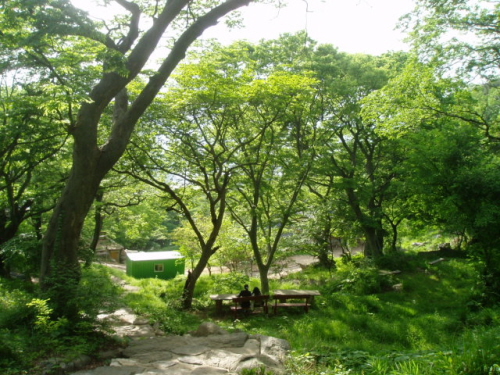
IMAGE: DOWNTOWNGAL AT WIKIMEDIA COMMONS
South Korea could likely serve as the model for reforestation: Lester Brown noted in Eco-Economy: Building an Economy for the Earth that “Perhaps the most successful national reforestation effort is the one undertaken in South Korea beginning more than a generation ago.” At the end of Korean war hostilities in 1953, the country was almost completely deforested because of logging and heavy use of firewood during the 35-year Japanese occupation earlier in the century. Since then, national and local government efforts have turned bare mountains into forest lands: according to The Korea Times, Between 1961 and 1995, stocked forest land went up from 4 million hectares to 6.3 million hectares. Total timber rose from 30.8 million cubic meters in 1954 to over 164.4 million cubic meters in 1984. By 2008, 11 billion trees had been planted. About two-thirds of South Korea is now clothed with forest. Even the DMZ is now “pristine wildlife habitat“… and while South and North Korea are still on hostile terms, the former has helped the latter with tree-planting efforts. For the science behind Korean reforestation, take a look at this article from The Forestry Chronicle.
Reforestation in Mexico: the Mixteca Region
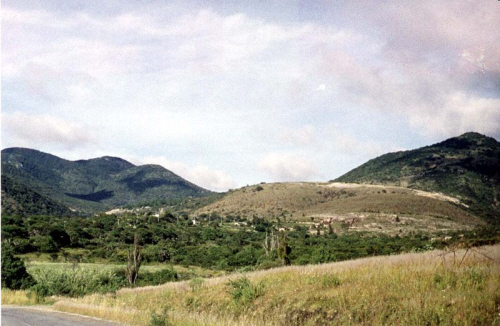
IMAGE: OSCARHIKARU AT WIKIMEDIA COMMONS
Before the arrival of Spanish explorers, Mexico’s Mixteca region (in the state of Oaxaca) was covered with forests. Heavy logging and goat herding turned the area into a desert by the late 20th century. The introduction of modern farming techniques without erosion control further degraded the land. In the 1980s, farmer Jesús León Santos learned of indigenous farming techniques from Guatemalan immigrants. He founded the Center for Integral Small Farmer Development in the Mixteca (CEDICAM) to implement these techniques, which included reforestation as a mean of rebuilding soil. Relying on native tree species, terraced agricultural techniques, and containment ditches for preventing hillside erosion, CEDICAM has not only reforested more than 1000 hectares (with 1 million trees), but helped create more economic opportunity and even gender equality within the region. Santos was awarded the Goldman Environmental Prize in 2008.
USA: the Appalchian Regional Reforestation Initiative
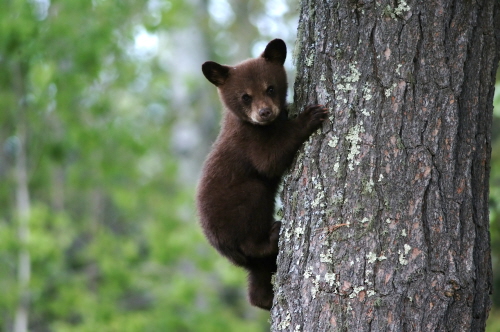
IMAGE: ARRI
The Appalachian region in the eastern United States is rich in natural resources, but, historically, poor economically. Coal mining, a source of employment for many in the region (as well as various forms of environmental degradation), has created vast tracts of deforested land. The Appalachian Region Reforestation Initiative began working to reverse the damage done by mining in the mid-200os: according to the United Nations Environment Program, “some 60 million trees have been planted on about 87,000 acres of active mine sites in Appalachia under ARRI’s guidance.” Not only has this helped restore one of the US’ richest regions in biodiversity, but also created economic alternatives to the mines, particularly in sustainable timber harvesting and the recreation industry. ARRI has included state governments, academia, private land owners, and even the coal industry in its planning and activities.
Reforestation in Colombia: Gaviotas
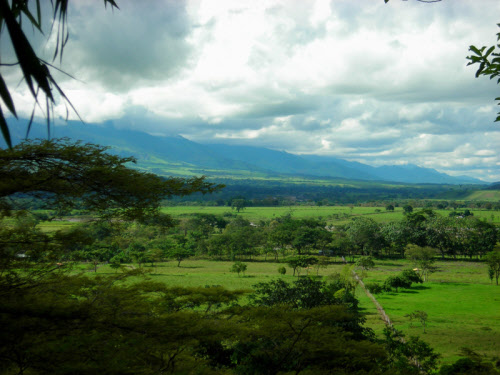
IMAGE: DAVID AT WIKIMEDIA COMMONS
Gaviotas, Colombia, is much smaller than the other locations we’ve discussed: an ecovillage of about 200 people in the Llanos grasslands region. Yet the United Nations named this community “a model of sustainable development” for its efforts to reforest the surrounding lands… all which have been decimated by the country’s long-running civil war (and which were, at one time, rainforests). Beginning in the early 1980s, residents of Gaviotas began planting Caribbean pine trees, and ensuring their survival in the acidic soil with the application of mycorrhizal fungus to their roots. Villagers have successfully reforested about 20,000 acres… and created economic opportunities with resin from the trees, and even new biodiesel initiatives. The increased forest cover has had an effect of weather patterns in the area: rainfall has increased by 10%, leading to a water-bottling effort. Gaviotans not only enjoy the increased forest cover, but also a way of life enhanced by organic farming, wind and solar power, and a social structure that provides housing, meals, and schooling to all residents.
Reforestation in Tanzania: the Kwimba Reforestation Project
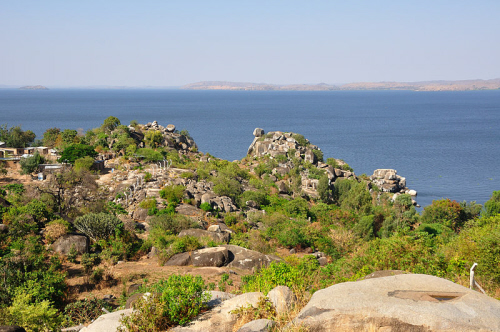
IMAGE: HANSUELI KRAPF AT WIKIMEDIA COMMONS
Started in 1990, the Kwimba Reforestation Project in Tanzania was a multinational and multi-organization effort to reforest land around 40 villages. Sub-Saharan Africa suffers from widespread deforestation, the vast majority of which results from the use of wood as a cooking fuel. Fuel wood harvesting, plus forest clearing in the early 20th century to try to get rid of the Tsetse fly, left the Kwimba area largely bereft of forest cover. More efficient use of wood for fuel, as well as overall economic development, drove the tactics of the Kwimba effort, which not only included the planting of Australian eucalyptus trees (which grow fast and served the needs of the affected communities well), but also the establishment of community and school plant nurseries, and the design of cleaner, more efficient cookstoves by the women who lived in the region. Organizations and governmental agencies from both Australia and Africa contributed to this effort. During the project’s nine-year run, over 6.4 million trees were planted. One of the most unique aspects of ensuring responsibility for those trees: “tree ownership certificates” which gave the owner title to the tree (regardless of who owned the land on which it was planted).
Restoring urban greenery in Tanzania
Moshi is a small town in the north of Tanzania home to 200,000 locals, and is perhaps best known as the gateway to the iconic Mt. Kilimanjaro and Kilimanjaro National park. Though the ever-growing tourism industry has seen the town develop at a rapid rate, providing livelihoods for many, it has also raised concerns that Moshi’s nature and biodiversity could be threatened as the town booms. Even in urban areas, nature is incredibly important. Trees for example not only help against the climate crisis and cool the area, but help improve air quality, increase property values, and improve the overall health and happiness of people in the area. In January of 2020, as part of ICLEI’s INTERACT-Bio project in Tanzania and facilitated by the Kilimanjaro Project, children, teachers, and headmasters from Kimochi Primary and Secondary School, as well as political and community leaders, visited the Kiviwama Arboretum to learn about the importance of trees in urban environments. Following their visit, each student planted a tree, chosen from five different indigenous species, and made a commitment to care for them going forward. Students also received a tree to plant at home, helping maintain the urban greenery in Moshi’s community and residential areas. In total, 500 new trees were planted, and given their planting in the rainy season, they stand the best chance of survival and one day standing tall in Moshi.
Restoring peatlands in Europe
Countries in the northern and north-eastern part of Europe have vast areas of peatland, a type of wetland where the year-round waterlogged conditions cause dead plants and other organic matter to decompose much more slowly. Over time, these build up to form “peat” that can be several meters thick. Peatlands serve an incredibly important role in the fight against the climate crisis, as they function as natural “carbon sinks,” absorbing carbon dioxide and other greenhouse gasses from the atmosphere. In fact, healthy, intact peatlands that are several meters deep are capable of storing about 30% percent of global carbon on only 3% of global land area. However, in the Baltic States, as well as Poland and Germany, vast areas of peatlands have been heavily degraded. These areas are global hotspots for the emission of greenhouse gasses, and the draining of peatlands for agricultural use or peat mining (using peat as a non-renewable fuel source) further contributes to these emissions as carbon dioxide and other greenhouse gases formerly stored in the peat end up being released into the atmosphere.
In 2016, together with eight partners from Estonia, Latvia, Lithuania and Poland, NABU (Nature and Biodiversity Conservation Union) – one of the oldest and largest environment associations in Germany – established the LIFE Climate Mitigation project “Peat Restore”. The project aims to “re-wet” formerly degraded and drained peatlands in the partner countries, covering an area of 5,300 hectares. Year-round wet conditions are necessary for healthy peatlands, so the restoration of these areas involves building dams and ditches to help retain water in the peat, and removing water-hungry bushes and trees which are not normally found in peatlands. As of February this year, peat restoration efforts were completed in most of the project sites. On over a 4,000 hectare area, these re-wetted peatlands can now begin re-growing their peat forming vegetation. The project estimates that the current restoration measures already prevent the continued release of the equivalent of 3 to 6 tons of carbon dioxide per hectare per year. The project will continue until the end of 2021, by which time the restoration measures in the other project areas should also be completed. In the long-term, these restored peatlands are expected to recover their original function as carbon sinks.
The project began in 2004 and concluded in 2014, though WWF continues to work with local partners in the landscape. As a result of the project, forest clearance went down by 88% and communities became more actively involved in safeguarding the forest. Forest fragmentation was reduced and a forest corridor was established between two main forest reserves, the Nilo Nature Reserve and the Amani Nature Reserve. Forest fires also declined by 97% in village land forest reserves. Alternative income generating activities helped to raise local incomes. By the end of the project, 1,326 people were involved in beekeeping and farming of the aromatic plant camphor basil, and incomes of villagers increased by 239%. This FLR programme shows that conservation benefits can be combined with social and economic benefits and that restoring forests can provide both immediate benefits to people and longer-term benefits to the ecosystem.
Restoring forests in Thailand
Approximately 800,000 hectares of forest in Thailand have been turned into mono-crop (single crop) plantations, primarily for maize, a type of “cash crop” grown for profit rather than consumption. Maize is typically used to feed animals being reared for meat production, and over the past decades, has become a major driver of deforestation in northern Thailand and neighboring countries. An estimated 84 trees are cut down for every “rai” (1,600 square meters) of maize production, often through the highly damaging “slash-and-burn” method. In the northern provinces of Chiangmai and Nan in Thailand, at least 40% watershed forested areas – including conservation forests and national parks – have been lost due to land clearing for mono-agriculture. Farmers do not benefit greatly from their mono-crop plantations either, only earning 1.5K baht (48 USD) per rai per year, contributing to a cycle of debt and poverty.
In August 2017, WWF-Thailand, with the support from the International Climate Initiative (IKI), implemented a conservation project in these northern provinces to restore the health of the degraded natural landscapes, and in turn improve the livelihoods of local communities. Named the FLR349 fund (Forest Landscape Restoration), the project encouraged farmers to restore the forest landscape and switch from single-crop farming to a mixed farming system, growing perennial trees, fruit trees, vegetables, and herbs for production as well as their own consumption. Ensuring crop diversity would not only provide farmers multiple streams of income, but also make plantations more sustainable, helping replenish the degraded soil that would then become more effective at absorbing carbon from the atmosphere. Likewise, restoring the forest landscape would benefit farmers, allowing them to use forest resources to build houses and furniture, source firewood for fuel, and use edible plants for consumption and medicine. Through donations from the private sector and consumers, the FLR349 fund was able to provide financial incentives and workshops to farmers, empowering them to permanently shift away from environmentally-damaging single-crop farming practices.
To date, 1,370 small farm owners have benefited from the project, and more than 38 workshops were conducted to share farming practices that better protect the environment. A total of 400 hectares of maize plantations have also been converted to a more environmentally-friendly mixed-farming system, with a total of 83,558 seedlings of mixed varieties planted across 72.8 hectares. By 2030, the FLR349 project in Chiang Mai and Nan aims to achieve the forest landscape restoration target of 8,000 hectares.


